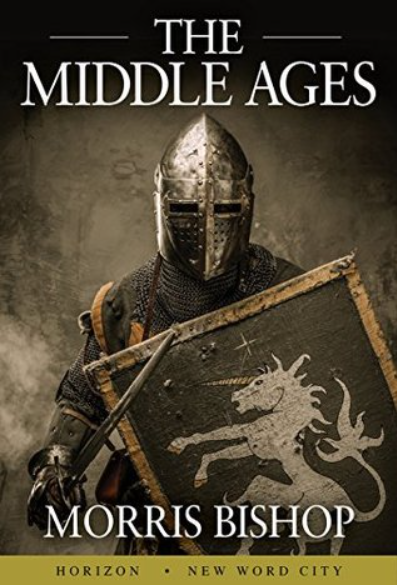Posted: August 19,2021
The Middle Ages


This book, from a geographic standpoint, covers Europe and the lands east of the Meditteranean. The time period is from 476 CE to 1453 CE. The first date points to the ascencion of the first non-Roman emperor of Rome (Western Roman Empire) and the second marks the fall of the Eastern Roman Empire.
It starts with two chapters called "The Long Dark and "The High Middle Ages" which serves as a frame for the rest of the book. What follows next is a theme-based approach to the Middle Ages. There is a section about knights that describes warfare, castles, feudalism, and other such "knightly" things. There is a section devoted to religion that discusses the church, the monastic orders, the lives of monks, and other things related to medieval religion.
Here are the chapter headings of the book which descriptively gives a strong idea of the different themes or topics:
- The Long Dark
- The High Middle Ages
- Knights In Battle
- The Noble's Life
- An Age of Faith
- Towns and Trade
- The Life of Labor
- The Life of Thought
- The Artist's Legacy
- End of An Era
I find the book to be interesting, informative, and a good read. It has certainly provided me with more knowledge of the time period than I used to have.
I now know that the Middle Ages can be divided into the Low Middle Ages and the High Middle Ages. The Low Middle Ages is the time period which most deserves the name the Dark Ages - a time when the previous civilization headed by Rome had fallen and people where scrambling for a new kind of order. The High Middle Ages was when Europe started to reorganize and rebuild.
I learned from this book that the time of the knights and castles which, as a lover of fantasy books, I greatly esteemed, was a reaction to the collapse of Roman civilization. It was every man for himself during the Dark Ages, so castles had to be constructed for defense and knights and their violent culture were central to the fight for survival.
I also learned of the rise and role of the Catholic Church and of how the Church system together with the feudal system replaced the vanished administrative system of Rome.
The book talks about the Crusades. It is my observation that the Crusades were a synthesis of both the Church and feudal systems, resulting in a violent religious action. The Crusades impacted Europe in many ways including the weakening of both the Church and feudal system that birthed it. After the Crusades, people were sick of war and doubtful of the Church, the burghers or tradesmen began to rise, and knights and nobility slowly lost their high place.
The Middle Ages gives us a sweeping panoramic view of this time in history but it does pause occasionally to give us interesting details. Details such as the war between Pope Gregory VII and King Henry IV of Saxony, or the daily routine of a monk, or the story of the Norman conquest of England. We get to meet the notable figures of the age such as Charlemagne, Alfred the Great, Joan of Arc, and Peter Abelard.
P.F. Albano (these.realms@gmail.com)
As an Amazon Associate I earn from qualifying purchases.